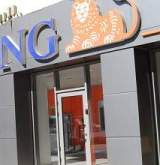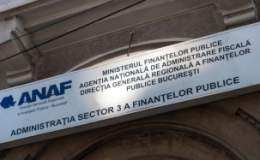Hidroelectrica ľ 10.15 billion lei
Romania’s biggest energy supplier, Hidroelectrica, anticipates a pre-tax profit of 63 million lei this year, down 3% from a year earlier, according to 2010 budget draft.
The political factor plays a crucial role in the development of the Romanian capital market, and the government could foster its development by listing large state-run companies in which state’s holdings are worth 41.2 billion lei (€10 billion), according to RCI.
Romgaz ľ 6.9 billion lei
The listing of large state-owned companies has been the key growth driver of the Warsaw stock exchange, which is now the largest equity market in Central and Eastern Europe, both by market cap and trade value, Laurentiu Ciocarlan (photo), Head of Primary Offers, RCI.
The state hopes the sale of its holdings in a number of energy companies would fetch over one billion euro, the amount being used for investments in energy and other fields, according to a memorandum of the Ministry of Economy.
The annex attached to the memorandum, envisages the listing of57-million lei 15% portion of its 85.1% interest in Romgaz.
Nuclearelectrica ľ 5.54 billion lei
Nuclearelectrica, the second largest power supplier in Romania, forecasts total revenues of 1.591 billion lei and investments of 847.947 million lei, according to 2010 budget draft of the company.
“The equity market in Romania is facing a major problem that lies in its capacity to finance the economy, which leads to an overexposure to financing in the banking sector. The Romanian capital market is dogged by severe liquidity shortages”, said Ciocarlan.
Romtelecom ľ 2 billion lei
The government’s failure to act, so as to list the shares of large state-run companies, the local stock market has slim chances of growing up to a point where it can attract institutional investors such as pension funds.
“The stock market could be a lucrative source of profit if the government listed at least a part of the companies it runs”, said Ciocarlan.
CEC Bank ľ 1.8 billion lei
Remained under the state’s ownership, after privatization talks were shelved in December 2005, was recording total assets of 20.9 billion lei (€4.9 billion) at the end of last year, around 54% more than in 2008.
CEC Bank will have a broad support from the Ministry of Economy, to cope with the tight market competition and to meet the European competitiveness standards. We will try to convince European regulators that the capital hike of CEC Bank has no adverse impact on the banking industry at large”, said Sebastian Vladescu, minister of public finance.
The advantages of listing state-run companies
For the government, the advantages would consist in obtaining the necessary resources to fund large infrastructure projects and bridge the budget gap while avoiding an increase in public debt.
On a long run, the listing would lead to “a sharp growth in state-run companies’ values under private ownership”, which would constitute a “valuable financing source for the government amid recessionary times, and act as a public finance stabilizer”, Ciocarlan added.
























































![HR [PLAY] Tech Workout - 11...](https://www.wall-street.ro/image_thumbs/thumbs/973/x973fe0a3888d417feff63de42e814180-260x260-00-65.jpg,qv=1713904942.pagespeed.ic.8JsqLrmwPf.jpg)










